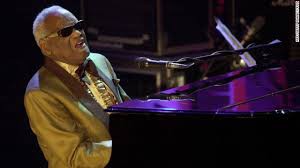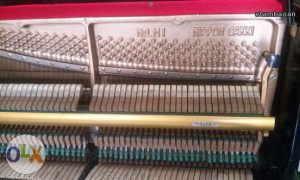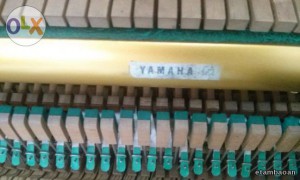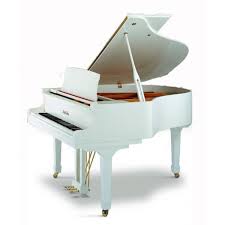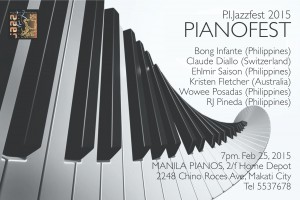Jean Guillou & Willem van Suijdam
Posted on February 13th, 2015
Piano Wholesale Philippines
Posted on February 11th, 2015
Piano Wholesale Philippines is where you as a possible dealer can go to buy good pianos one by one. Grand pianos are available too, please call us at any time at (02)553.7678 or email us at info@pianos.ph for confidential correspondence. We also wholesale electronic pianos, see our website. These can be bought by music schools, retailers and other.
“wholesale” is the resale of new and used goods to retailers, to industrial, commercial, institutional or professional users, or to other wholesalers, where you will be involved acting as an agent or broker in buying merchandise for, or selling merchandise to, such persons. Wholesalers frequently physically assemble, sort and grade goods in large lots, repack and redistribute in smaller lots. While wholesalers of most products usually operate from independent premises, marketing can take place at specific wholesale markets where all traders are congregated. We at Manila Pianos can do the marketing for you!
Traditionally, wholesalers are closer to the markets they supplied than us, however, the advent of the internet there are an increasing number of wholesalers located elsewhere.
To wholesale pianos you Must buy them at wholesale price and you Must agree to display them in an appropriate area and you must agree to make sure the pianos are mechanically fit, in tune and without blemishes as well as delivery to the end user as well as responsible for warranties on the pianos. Manila Pianos will be responsible to deliver any parts to the wholesaler at no charge, provided the piano that was sold is in the warranty period and damages were the fault of the manufacturer or the piano.
BALDWIN RAY CHARLES GRAND PIANO
Posted on February 6th, 2015
BALDWIN RAY CHARLES GRAND PIANO MODEL SD 10, CONCERT GRAND PIANO 9′, restored by Manila Pianos Inc.
Baldwin Ray Charles grand piano, the supreme quality of the Baldwin 9 foot Concert Grand made it the preferred piano by many of the world’s well-known pianists, composers, conductors and performance organizations.Many distinguished musicians have chosen to compose, perform and record using Baldwin pianos, including the pianists Claudio Arrau, Igor Stravinsky, Béla Bartók, Leonard Bernstein and John Williams. Baldwin pianos have been used by popular entertainers including Ray Charles, Liberace, Richard Carpenter, and Carly Simon, and jazz pianists Dave Brubeck and Dick Hyman. Amy Lee, the lead vocalist, pianist and keyboardist of Evanescence also uses this brand in most of her compositions, recordings and live performances. A Baldwin piano can be seen nightly being played by Paul Shaffer on the Late Show with David Letterman. Baldwin is the official piano of the television show Glee. Marian McPartland’s long-running radio show Piano Jazz was hosted by Baldwin. Baldwin was second only to Steinway in its artist and symphony roster.
The Baldwin Concert Grand was first introduced in 1965 and since then it is one of the most popular concert pianos played on many stages by numerous performers.
Here is some information from the manufacturer which explains their uncompromising in choosing the best quality material in producing this special musical instrument:
Baldwin’s Concert Grand is constructed from superior materials such as supreme kinds of wood to ensure the highest quality in the piano’s tone: maple – for the rim; best spruce on the soundboard; and African ebony wood for the piano’s sharp keys.
Baldwin piano has especially engineered Renner hammers to ensure the great results when playing on the piano. The pedals are made from brass. The superior materials are most important for the piano but that’s not enough. Each part of the hundreds of parts of the piano is carefully designed by the best piano engineers. Each part is double checked before installing it in the piano. We also retail high end grand pianos including Steinway grand pianos.
At first glance Baldwin Piano & Organ Company would appear to be a rather staid, traditional manufacturer of musical instruments, but a closer examination of its more than 125 years in business reveals a fascinating history of breathtaking highs and devastating lows. In its early years, the company combined innovative marketing and financing techniques with high-quality instruments to capture a leading share of the piano market. A 1970s-era diversification into financial services transformed the company into a $9 billion conglomerate known as Baldwin-United Corp. But bad management in the 1980s led to one of the largest bankruptcies in American history. Baldwin Piano & Organ (BP&O) emerged from the fiasco focused on its core business, keyboard instruments, only to find intense foreign competition and a shrinking customer base. Nevertheless, Baldwin has managed to eke out admirable returns; sales rose from $110.1 million in 1992 to $122.6 million in 1995, and net income slid from a high of $5.9 million in 1992 to just $345,000 in 1994, rebounding to just under $4 million in 1995. A new CEO, 48-year-old Karen L. Hendricks, hoped to lead a return to consistent growth in profitability.
The company is named for founder Dwight Hamilton Baldwin, who was born in Pennsylvania in 1821. Hoping to become an itinerant minister, this pious Presbyterian took courses at Ohio’s Oberlin College. When advisors judged him too frail for this demanding vocation, Baldwin left Oberlin to become a traveling music teacher. With his wife, Emerine Summers, Baldwin finally settled in Cincinnati and took a teaching post with the city’s public school system in the 1850s.
Having saved a $2,000 nest egg over the course of his seven-year career in music education, Baldwin invested the money in a retail piano shop in 1862. The showroom carried Chickering, Steinway, Decker Brothers, and Vose pianos as well as Estey Reed organs. A limited number of instruments manufactured by The Ohio Valley Piano Co. were sold under the D.H. Baldwin & Co. name.
A company history published in the June 1987 edition of Music Trades Magazine noted Baldwin’s particular knack for hiring quality employees. In 1865 he engaged Civil War veteran Lucien Wulsin as a bookkeeper. Wulsin accepted a partnership in the company in 1873, and with Baldwin established sales outlets in Louisville and Indianapolis as well as other smaller cities in the tri-state area.
It was not until after they lost their Steinway franchise in 1887 that the colleagues decided to begin designing and building their own keyboard instruments. They started out manufacturing organs in Chicago, incorporating the Hamilton Organ Company in 1889, and establishing the Baldwin Piano Company in Cincinnati the following year. The partners shipped their first self-made piano in 1891, and two years later formed the Ellington Piano Company. This separate subsidiary and trademark built mid-range models without compromising the high-quality image cultivated by the Baldwin brand.
When D. H. Baldwin and his wife died within a few weeks of each other in 1899, his 80 percent stake in the various companies passed to the Presbyterian Church. Wulsin and three other minority shareholders purchased the businesses and merged them to form The Baldwin Corp.
Up until this time, Baldwin had focused its sales efforts on building a chain of company-owned retail outlets. But soon after the turn of the century, Wulsin adopted a growth strategy that had been unsuccessfully pioneered by the Singer Sewing Machine Company and also used by a competitor in the piano market, W.W. Kimball Co. of Chicago. This “consignment/installment plan,” which Baldwin had started testing as early as 1875, called for independent retailers to carry instruments on consignment, only paying shipping costs until the keyboards were sold. This aspect of the program allowed retailers to carry large, expensive, and impressive inventories without much risk or cost. Furthermore, Baldwin assumed additional risk by financing individual customers’ purchases. Dealers kept down payments and interest as their portion of the profit, while the manufacturer managed the loans and reaped the principal.
But it was not just savvy marketing that drove Baldwin’s rise to the top of the piano industry. Beginning with the Paris Exposition of the Arts and Manufacturers in 1900, the well-built instruments earned top honors at World’s Fairs in St. Louis (1904), London (1914), Brussels (1958), Seattle (1964), and New York (1964-65). Baldwin pianos soon captured the attention of well-known artists around the world, beginning with turn-of-the-century stars like Marcella Sernbrich and Vladimir de Pachmann and including Leonard Bernstein, Liberace, Aaron Copland, André Previn, Dave Brubeck, Lawrence Welk, Zubin Mehta, Carly Simon, and Bruce Hornsby, among many others. Baldwin took pains to emphasize that these were not compensated endorsements, but “a professional judgment and commitment” to the instrument.
Lucien Wulsin held the reins at Baldwin until his death in 1912, when he was succeeded by George Armstrong. The “scholarly” Armstrong led Baldwin for about 14 years, guiding a period when player pianos fueled rapid growth. By 1926, Baldwin’s annual sales approached $10 million, half of that figure generated by player pianos. Lucien Wulsin took Baldwin’s helm that year, the second of three successive generations of Lucien Wulsins to lead the company through most of the twentieth century.
However, the “roaring twenties” ended even earlier for Baldwin and its keyboard industry competitors than they did for the rest of the country. The 1927 introduction of the radio decimated player piano sales, sending many keyboard manufacturers into bankruptcy. The Great Depression followed fast on the heels of this industry-specific downturn, sealing the fate of many of those piano companies that had not already succumbed. Baldwin’s endurance and eventual resurgence was credited to Armstrong, who in the early 1920s had set aside significant funds for “unforeseen contingencies.” By the end of the 1930s, Baldwin led the U.S. piano industry in dollar volume, with an estimated $4 million in sales and net income of $159,000.
Armstrong’s “rainy day” fund not only kept the company afloat, but also enabled Lucien Wulsin to direct trailblazing sound reproduction studies in cooperation with the University of Cincinnati’s Physics Department. These experiments stopped in 1941, when Baldwin’s facilities were enlisted to help the war effort by manufacturing wooden aircraft wings. While the company was able to apply veneering skills honed during this period to piano manufacturing in the postwar era, war work was not the windfall it was to some other industries; in fact, Baldwin’s sales only amounted to about $7 million at the war’s end.
Postwar consumer demand, as well as a new line of electronic organs for residential and church use, drove sales to over $33 million by 1954. Seeking lower labor costs, more relaxed building codes, and less limited room to grow, Baldwin began to move its manufacturing operations from Cincinnati later that decade. Plants in Arkansas, Mississippi, and later Mexico had replaced the original factory by 1968.
By that time, the second Lucien Wulsin had been superseded as CEO by his son (also Lucien), who led Baldwin from 1964 until 1980, overseeing the most infamous period in the venerable company’s history.
Given Baldwin’s decades of experience financing pianos, the company’s late 1960s diversification into other financial services seemed quite logical. Lucien Wulsin got the ball rolling with the 1968 acquisition of Denver’s Central Bank & Trust Co. He was joined in this quest by Morley P. Thompson, appointed president of the company in 1970. Having graduated from the Harvard Business School in 1950, Thompson had started out as a door-to-door piano salesman. His skill at shuffling money among subsidiaries to limit corporate taxes and generate acquisition funds won him a reputation as a financial “wizard.”
Thompson would not be satisfied with a mere sideline in finance; he wanted to fashion a major conglomerate out of the nation’s largest keyboard company. Under his guidance, Baldwin acquired literally dozens of financial services firms in the 1970s and early 1980s. At its peak, the company controlled over 200 insurance companies, savings and loan institutions, and investment firms. Some of its larger deals included a 1977 merger with Cincinnati investment company United Corp. to form Baldwin-United Corp. and the October 1981 acquisition of Sperry & Hutchinson, best known for its “S&H Green Stamps.” Baldwin’s most popular financial product was the single-premium deferred annuity (SPDA), a life insurance policy that amassed interest tax-free until withdrawals began. From 1980 to 1983, Baldwin sold 165,000 of these policies, or over $4 billion worth, at interest rates of at least 7.5 percent and up to 14.5 percent. By 1982, keyboard instruments constituted a mere three percent of Baldwin-United’s $3.6 billion revenues.
Although Thompson employed a complex array of transactions to maximize income and minimize costs, several factors fouled up his plans. Fundamentally, the company was paying higher interest rates than it was earning on its own investments. Thompson’s fiscal juggling allowed the company to generate tax credits on the losses, but with little profit against which to count those credits, Thompson began to register some tax credits as profits in 1979.
In the absence of net income at his own companies, Thompson set out on a quest to acquire companies with positive cash flow. In March 1982, Baldwin acquired Mortgage Guaranty Insurance Corp. (MGIC), a Wisconsin-based residential mortgage insurer that ranked at the top of its field. Baldwin-United took out nearly $600 million in short-term loans from eight banks to help pay the $1.2 billion price tag. When MGIC’s profits slid more than 20 percent, Thompson started siphoning liquid assets from insurance subsidiaries’ reserve funds to service the debt, a move that drew the attention of insurance regulators in three states.
Thompson may have been known as a financial magician, but no sleight-of-hand could help him come up with the $440 million short-term debt payment that finally came due March 1983. The full extent of Baldwin’s troubles began to come to light that May, the same month that Thompson took a “leave of absence.” (By the end of the year, he would be acting as treasurer for American Laundry Machinery, a Cincinnati-based manufacturer of laundry and dry cleaning equipment.) Robert S. “Dick” Harrison, executive vice-president and chief financial officer, replaced Thompson on an interim basis. That July, insurance commissioners from Arkansas and Indiana seized control of Baldwin-United’s six insurance companies, effectively freezing the vast majority of the company’s assets. In June 1983 the board of directors called in Victor Palmieri, an expert at bankruptcy reorganization, to guide the proceedings. Palmieri did not pull any punches, telling Time magazine that “Things at Baldwin were more confused than anyone could have imagined.”
Baldwin-United’s $9 billion in liabilities exceeded the combined debt loads of the four largest bankruptcies to precede it, including Wickes, Itel, Braniff Airlines, and Penn Central. The market value of Lucien Wulsin’s stake in Baldwin-United shrunk from $19.8 million in November 1982 to $1 million by late 1983. Laura Saunders of Forbes called it “a classic corporate disaster,” and Fortune’s Steven Flax agreed, saying it was an “amazing, appalling story.” It took until August 1985 for Baldwin-United to file a reorganization plan. In the meantime, Baldwin Piano & Organ was among the $1.4 billion in assets sold off to settle claims against the parent company.
In June 1984, R. S. Harrison, who notwithstanding his brief stint as interim CEO of Baldwin-United had been CEO of Baldwin Piano & Organ since 1974, joined with BP&O President Harold Smith to execute a leveraged buyout of the subsidiary from its troubled parent. All but $4 million of the $65 million buyout was financed with help from Security Pacific Business Credit and General Electric Credit Corp. Despite this relatively small cash contribution, Harrison retained about 25 percent of the privately-held company, and Smith kept a 23 percent stake. Barron’s Lauren R. Rublin characterized the move as a “rescue,” but being extricated from the Baldwin-United mess did not by any means guarantee smooth sailing for BP&O. Although it continued to lead the keyboard industry, it faced a number of problems endemic to that market.
Forbes’ s Laura Saunders cited demographics as a key factor of the piano industry’s problems, noting that “From 1965 to 1975, the birth rate per 1,000 women dropped from 96 to 66. Since most pianos are bought for elementary school children, the effect of that should have been obvious.” Other issues, like high interest rates and rising raw materials costs, accelerated the contraction of the overall keyboard market. U.S. acoustic piano sales peaked in 1978 at 282,000 new units, according to the American Music Conference, a Chicago-based trade group. That number declined by 30 percent, to less than 200,000 by 1983, and was down to 151,300 by 1985. Traditional manual multiple keyboard organs were sinking even faster: unit sales peaked in 1974 at 234,000, and were down to 50,000 by 1986.
Competition on several fronts further complicated these fundamental difficulties. Saunders noted the “diminished cultural cachet of playing the piano,” and it was undeniable that other, largely more passive forms of entertainment like radio, television, computers, video games, and VCRs had whittled away at leisure time previously devoted to piano playing. Domestic piano companies also faced competition from low-cost foreign manufacturers, who by 1986 controlled 43 percent of the acoustic piano market. Leaders of this foreign assault included Yamaha, Kawai, and Samick. In the midst of these challenges, Baldwin Piano & Organ’s sales slid from $116 million in 1981 to $90 million by 1985.
Harrison and Smith formulated several strategies for survival in these difficult circumstances. In October 1986, they sold 19.4 percent of the company, about 1.2 million shares, to generate about $9 million in debt reduction funds. At the same time, they initiated cost-reduction efforts, moving the corporate headquarters to Loveland, Ohio, for example. In order to utilize excess production capacity, BP&O reapplied its electronic, woodworking, and technological know-how to related businesses. By the mid-1980s, the company was creating printed circuit boards and electro-mechanical assemblies for heat pumps, vending machines, and clocks. By October 1987, they had reduced debt by more than $40 million.
Baldwin used several strategies to combat foreign competition. In 1988, the company increased its share of the U.S. keyboard market via the acquisition of the Wurlitzer Co., which was itself near bankruptcy. While the merger with third-ranking Wurlitzer was not without pitfalls, it did help to increase Baldwin’s leading share of U.S. keyboard sales from 19 percent in 1986 to more than 26 percent by 1991. Baldwin also moved some manufacturing to countries like South Korea, where rock-bottom labor costs reigned. It even started making pianos under contract with Yamaha in 1986. The company also enjoyed a measure of good luck: keyboard sales rebounded slightly in 1986 and 1987 after bottoming-out in the early 1980s.
BP&O’s sales rebounded in the late 1980s, rising from less than $100 million mid-decade to a high of $135 million in 1988. Net income more than doubled during the period, to over $7.1 million in 1987.
For the most part, Baldwin carried on the strategies formulated in the late 1980s through the early 1990s. Manufacturing, selling, and financing of acoustic pianos continued to constitute the vast majority of sales and net income, while electronic and digital pianos, organs, clocks, and circuit boards were considered small but vital operations. But as corporate revenues dipped to $103.2 million in 1991 and net income slid to $4.4 million, it became clear that BP&O would have to adopt an ongoing strategy of market analysis in order to ensure steady growth and profitability.
In 1994, the company hired 48-year-old Karen L. Hendricks to succeed R. S. Harrison as CEO and president. With more than twenty years’ experience in consumer goods, Hendricks brought a renewed focus on marketing to Baldwin. In 1995, the company consolidated sales of its three primary brands–Baldwin, Chickering, and Wurlitzer–targeting each trademark at a particular price point. This strategy not only clarified brand strategies, but also yielded manufacturing, distribution, and back office efficiencies. Management also hoped to more fully develop the company’s OEM electronics division. Although BP&O’s annual sales and earnings had not fully recovered from their late 1980s gusto by the end of 1995, CEO Hendricks expressed her confidence that the company was “Poised For Progress” in 1996 and beyond.
MANILAPIANOS INC. IS THE LARGEST STEINWAY REBUILDING CENTER IN ASIA.
YAMAHA PIANO FOR SALE OLX
Posted on February 5th, 2015
YAMAHA PIANO FOR SALE OLX
YAMAHA PIANO FOR SALE OLX, by Manila Pianos Inc. We will never sell anything like this, trust me.
It is horrible how Philippine people get cheated on sometimes when it comes to buying a Yamaha or other piano. Today is February 5, 2015 and we find a Yamaha Piano for sale for P 70,000.00 with the following horrible pictures:
Picture 1: It shows a Yamaha logo and the plate is repainted with the wrong color paint, telling me immediately that job that has been done was cheap, not only that, it was also done by people that had no idea about pianos. The paint may start to fall off soon, however it looks ok for now, but will soon reveal problems under it like cracks or rust. I can safely assume this piano is VERY old and was possibly used and well abused in a Japanese school or bar. ========================================================================================
Picture 2: Reckless spaying of paint over the strings as well as the pins. An indication that the people that did this as well as the people selling this a) don’t care about customers or b) really don’t know what they are doing. This kind of pianos should not be sold because strings will break, pins will get lose within very short time and it also means that the piano was not rebuilt the proper way. One MUST remove the action, strings and pins BEFORE spraying the piano plate and then put it back in. New pins and strings that is. and that cost serious money, more than the asking price for this Yamaha piano. It is no wonder Yamaha hates to sale of their second hand pianos because of this kind of customer deception, it looks bad on them too.
========================================================================================
Picture 3 and 4: Action with all original worn out parts. Even the Yamaha label indicates that this Yamaha piano is old, the back checks are all in a different position meaning the piano was not regulated and probable the inside wasn’t touched by anyone closely resembling an accomplished piano technician, The felt is old, green, which indicate the piano is from 1950-1960 and the felt looks pretty warn out. The hammers are old and worn out and the spacing of them looks like someone went though it with a knife. There also seems no felt left on the hammers to speak of. The person buying this piano will purchase a non piano and will pay P 70,000.00 too much. As you can see the M1 is also fronted by the word “no” which indicates this piano was made in Koera and not in Japan. I wish this kind of “piano” would not be sold anymore, it is bad for business. VERY BAD FOR BUSINESS.
ESSEX PIANOS BY PEARL RIVER
Posted on February 2nd, 2015
ESSEX PIANOS BY PEARL RIVER
ESSEX PIANOS BY PEARL RIVER, MORE MONEY, SAME PIANO.
Essex is made by Pearl River and is slightly modified to look like the piano is NOT made by Pearl River in China. They are sold by the Steinway group for absurd prices, like a small grand for P900,000 where ManilaPianos Inc. sells same for P499,000. Uprights that under the name Essex sell for P500,000 sold by us for P250,000
Yes, Pearl River makes great pianos, first for Yamaha, now for Steinway, but….. the Pearl River pianos come all from the same belt, 130,000 a year! LOOK on the second picture, you will see both Pearl River and Essex rolling of the same belt!
In the fifty-year history of Pearl River, we’ve done our best to perfect our product one step at a time: • In 1997, the Pearl River Group was awarded the Certification of Quality by the International Organization of Standardization, ISO9000.
• In 1999, the Pearl River Piano Group was given the first Popular Brand in the Chinese musical instrument industry.
• In 2001, the Pearl River Piano Group was ranked first in production and sales in the global piano manufacturing industry.
• In 2002, the Pearl River Piano Group became one of sixteen Chinese corporations judged able to compete internationally.
• In 2003, the Pearl River Piano Group was awarded the honor of becoming a Chinese Famous Brand Product.
• In 2004, the Pearl River Piano Group reached the honor of The National Outstanding Enterprise on Quality Management.
• In January 2006, the Pearl River Piano Group received The Milestone Prize distributed for the first time in its 104-year history by the International Music Product Association to a non-U.S. musical instrument company.
• In March 2006, the Pearl River Piano Group became the first Chinese piano manufacturer to produce over one million units.
• In April 2007, the Pearl River Piano Group was awarded the Certificate of Environmental Management Systems by the International Organization for Standardization, ISO14000.
• In June 2007, the Pearl River Piano Group received the honor of High and New Technique Enterprise.
• In October 2008, the Technical Center of Pearl River Piano Group is awarded as National Technical Center by Chinese Central Government, which is unique in Chinese musical instrument industry. Technique Enterprise.
• In October 2009, the Pearl River Piano Group received the honor of National Quality Award which is the highest quality award in China. Pearl River Piano Group is the only one manufacturer in Chinese musical instrument industry who won this award.
Making the best piano in the world and becoming the world’s most successful musical instrument company shows the degree of commitment from the people of the Pearl River Piano Group.
JAZZ CONCERT MANILA
Posted on February 1st, 2015
JAZZ CONCERT MANILA
Jazz Concert Manila at ManilaPianos, Philippine International Jazz Festival CONCERT AT MANILA PIANO FEBRUARY 25/2015 AT 7.00 PM, 6 FAMOUS JAZZ PIANISTS UNDER 1 ROOF!!!!!!!!!
Jazz is a genre of music that originated in African-American communities during the late 19th and early 20th century. Jazz emerged in many parts of the United States of independent popular musical styles; linked by the common bonds of European American and African-American musical parentage with a performance orientation. Jazz spans a range of music from ragtime to the present day—a period of over 100 years—and has proved to be very difficult to define. Jazz makes heavy use of improvisation, polyrhythms, syncopation, and the swung note as well as aspects of European harmony, American popular music, the brass band tradition, and African musical elements such as blue notes and ragtime. A musical group that plays jazz is called a jazz band.
As jazz spread around the world, it drew on different national, regional, and local musical cultures, giving rise to many distinctive styles. New Orleans jazz began in the early 1910s, and it combined earlier brass band marches, French quadrilles, biguine, ragtime, and blues with collective, polyphonic improvisation. Heavily arranged dance-oriented swing big bands, Kansas City jazz, a hard-swinging, bluesy, improvisational style and Gypsy jazz, a style that emphasized musette waltzes, were important styles in the 1930s. Bebop emerged in the 1940s; it shifted jazz from danceable popular music towards a more challenging “musician’s music” which was played at faster tempos and used more chord-based improvisation. Cool jazz developed in the end of the 1940s, introducing calmer, smoother sounds and long, linear melodic lines. Free jazz from the 1950s explored playing without regular meter, beat and formal structures.
Hard bop emerged in the mid-1950s, introducing influences from rhythm and blues, gospel music, and blues, especially in the saxophone and piano playing. Modal jazz, which developed in the late 1950s, used the mode, or musical scale, as the basis of musical structure and improvisation. Jazz-rock fusion developed in the late 1960s and early 1970s by combining jazz improvisation with rock rhythms, electric instruments and rock’s highly amplified stage sound. In the early 1980s, a commercial form of jazz fusion called “smooth jazz” became successful and garnered significant radio airplay. Other jazz styles include Afro-Cuban jazz, West Coast jazz, ska jazz, Indo jazz, avant-garde jazz, soul jazz, chamber jazz, Latin jazz, jazz funk, loft jazz, punk jazz, acid jazz, ethno jazz, jazz rap, M-Base and nu jazz.
Louis Armstrong, one of the most famous musicians in jazz, made this observation on the history of the music: “At one time they were calling it levee camp music, then in my day it was ragtime. When I got up North I commenced to hear about jazz, Chicago style, Dixieland, swing. All refinements of what we played in New Orleans… There ain’t nothing new.” In a 1988 interview, jazz musician J. J. Johnson said: “Jazz is restless. It won’t stay put and it never will.”

